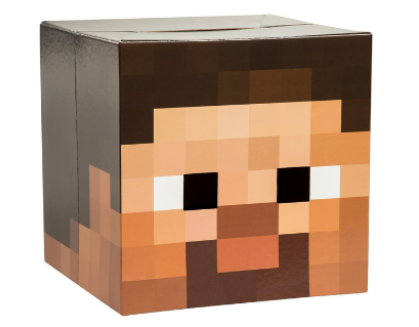Think about the last time you couldn’t put down a controller, even when you planned to play for just five minutes. Chances are, that pull wasn’t random. It’s crafted by a smart combination of design and psychology working together.
Gaming isn’t just about defeating enemies or scoring points. Players find themselves returning because games consistently tap into basic psychological needs. Whether it’s a sense of achievement, social connection, or simply a compelling story, there are many reasons we press ‘play’ repeatedly.
This guide breaks down the most effective psychological drivers that keep players engaged. Dive in to discover what truly keeps us coming back, and see your own gaming experiences in a fresh light.
Player Motivation Styles Shape Game Engagement
Players thrive when games recognize their unique motivations. Designers know to create experiences that match player desires, helping both casual and competitive players stay invested for longer sessions.
The way someone plays can drastically affect how attached they feel. Whether you chase high scores, complete stories, or build virtual empires, understanding these motivations offers a toolkit for deeper enjoyment in any genre.
Chasing Achievement and Progress Feeds Satisfaction
Achievement-driven players focus on collecting trophies, unlocking new content, and ticking off tough challenges. You’ll hear someone say, “Just one more level, and I’ll unlock that rare skin.”
Games often reward progress with visible milestones, creating a win-state loop that feels deeply satisfying. This feedback is concrete—think of the celebration sound when you finish a quest. That reinforcement cements the urge to keep playing.
To amplify progress satisfaction: break big goals into smaller steps, celebrate every win, and review your collection or stats to reinforce achievement. Seeing your growth charted visually makes long sessions feel worthwhile.
Seeking Social Connection Drives Replayability
For socializers, play means more with friends involved. These players might join a clan or coordinate raids in games like, “Let’s team up tonight at eight and beat that boss together.”
Games integrate chatting, grouping, or direct competition, fueling a sense of belonging. Those Friday-night group calls mirror a living room gathering, and the excitement keeps both introverts and extroverts involved.
To sustain social energy: join groups with regular events, participate in voice or text chats, and support teammates. Friendships made in-game can outlast even the games themselves, fueling consistent logins.
| Player Type | What They Seek | Game Design Example | Next Step to Boost Fun |
|---|---|---|---|
| Achiever | Milestones, status | Leaderboards, achievements | Track goals and review progress weekly |
| Socializer | Connection, teamwork | Co-op modes, guilds | Join active groups or forums |
| Explorer | Discovery, secrets | Hidden areas, lore | Document findings for personal lore book |
| Killer | Competition, dominance | PvP, ranked matches | Practice skills and enter tourneys |
| Creator | Expression, building | Mod tools, base-building | Share creations online for feedback |
Feedback Loops Turn Small Wins Into Big Habits
Games rely on rapid feedback to encourage repeat play. The smallest achievements—like coins or sound cues—add up fast, making quitting feel less appealing.
Immediate feedback helps your brain crave continued play. Suddenly, “just five minutes” turns into a half-hour as you chase the next reward.
Variable Rewards Keep Curiosity High
Games don’t reward players at predictable intervals. Sometimes, a big loot drop or rare find spikes the excitement, harnessing something called a “variable reward schedule.”
- Check daily for random in-game bonuses—timers ensure returns.
- Open loot boxes or discover secrets—unpredictable outcomes maintain excitement and surprise.
- Spin wheels or play gacha—uncertainty creates anticipation as you hope for that special item.
- Complete dynamic events—changing objectives and sporadic appearances inspire regular check-ins.
- Watch for glowing cues—unveiling hidden rewards fosters curiosity about what’s next around the corner.
Variation triggers the “what if this time is different?” mindset, fueling long-term engagement while keeping motivation fresh.
Momentum-Building Tasks Sustain Play
Many games provide escalating tasks—think of stacking daily challenges or combo bonuses. Players finish one, then feel ready to handle the next.
- Chain small tasks for bigger rewards—completing dailies can accumulate into special weekly prizes.
- Maintain streaks for bonuses—missing a day resets progress, encouraging consistent logins.
- Set session goals—finish a certain number of rounds for unique badges at the session’s end.
- Climb season ladders—each win unlocks higher ranks and better gear, motivating top-tier play.
- Earn cumulative progress bars—filling a meter unlocks new levels or rare appearances, so even quick sessions feel productive.
Building habits from small wins grows self-confidence. Copy this strategy: “Today, I’ll do three dailies and unlock that weekly chest—no excuses.”
Storytelling Tactics Anchor Emotional Investment
Clever storytelling gives meaning to each action. Players build loyalty to characters, worlds, or causes, sticking around even when gameplay gets tough or repetitive.
Relatable Heroes Build Long-Term Loyalty
Games present protagonists with real struggles and triumphs. Players might say, “I feel responsible for this character—he’s become more than pixels.”
Backstories deepen connections by layering motives, weaknesses, and dreams. Saving a virtual world or protecting a friend suddenly feels pressing—and quitting mid-journey becomes difficult.
If stuck, remind yourself how your favorite character would handle setbacks. Channel their perseverance or cleverness to shape your real actions too.
Branching Choices Increase Ownership
Every choice in narrative games shifts the story. Telling a sidekick, “We need to help, even if it’s risky,” creates unique outcomes for each player.
Games log choices, replaying old conversations and showing alternate endings. Those personalized branches give a sense of creative control—every run becomes a unique adventure.
Copy this tactic: Commit to a playthrough focused on a distinct moral code for greater personal investment.
Challenge Curves Balance Frustration and Mastery
The right level of difficulty keeps frustration manageable. Games using adjustable barriers engage beginners and experts without overwhelming either group.
Let’s review differing challenge curves with common scenarios, highlighting which approaches deepen long-term retention and why it works.
| Game Type | Difficulty Approach | Long-Term Retention Impact |
|---|---|---|
| Puzzle Game | Increases complexity gradually | Keeps new players confident; smooth adaption |
| Shooter | Optional difficulty spikes | Encourages mastery for veterans; less rage-quit |
| MMO | Diverse challenges, social boosts | Retains broad player base; everyone fits in |
This table shows why smart, adjustable challenge curves support different playstyles. You’ll get sustained fun by picking games with tuning options—test various modes for your ideal pace.
Reward Systems Turn Progress Into a Ritual
Players return regularly when rewards match effort. For instance, a player logging in for a daily streak sees this as a meaningful part of their morning routine—similar to grabbing coffee before work.
Games that synchronize real-life schedules promote ritualized play. Event calendars, rare drops, and evolving goals blend into a structured hobby rather than a random time-waster.
Limited-time rewards provide extra incentive. “Weekend-only event, join now for double loot!” triggers commitment and drives group activity at specific intervals.
Some titles use rotating objectives or festivals, so logging in means there’s always something new. This sense of discovery feels rewarding even if sessions are short.
Analogous to training for a marathon: you see your improvement charted over time, making each effort part of a meaningful journey worth revisiting.
Game Communities Create Belonging and Growth
- Join a guild or clan to access exclusive raids and challenges, which rely on shared strategy and build long-term friendships through consistent interaction.
- Participate in forum discussions about game mechanics, gaining insights and sharing tips, which strengthens your connection to both new and seasoned players alike.
- Offer mentorship to newer players by answering questions or guiding them through tough missions, reinforcing your expertise and sense of community value.
- Collaborate to solve in-game puzzles or decode lore, combining resources and ideas for a common goal that feels truly social and intellectually fulfilling.
- Attend online tournaments or digital meet-ups, where you can compete or share strategies, bolstering competitive drive and forming rivalries that grow into lasting friendships.
- Create or follow fan content such as guides and custom mods, making the game environment richer and establishing your own creative footprint within a passionate crowd.
Communities amplify the experience by offering new challenges and ways to contribute beyond single playthroughs. You stay motivated not just for rewards, but to support and interact with peers who value your presence.
Copy this mindset: “Today I’ll help a guildmate finish their quest before signing off.” Every small act deepens your investment in both the game and its community.
Narrative and Design Synergy Generates Lasting Impact
Great games make mechanics and story work seamlessly together, anchoring player investment. A well-timed cinematic transition or a context-driven quest can turn standard gameplay into an unforgettable memory, like rewatching a favorite movie scene that still gives you chills.
When you feel what the characters feel—relief after a suspenseful battle, joy at a reunion, or regret after a difficult choice—the connection grows. Carefully balanced aesthetics, sound, and gameplay encourage emotional engagement beyond technical skill.
Games also experiment with innovative mechanics tied to narrative outcomes. For example, resource management might affect a story’s ending, mirroring real-life consequences for consistent actions over time.
Comparing this experience to reading an interactive book, players find that every decision and mechanic in the game directly shapes their narrative, keeping sessions fresh and memorable.
Wrapping Up: The Enduring Pull of Gaming Psychology
Games continue to capture our attention through well-designed psychological triggers. Achievement, belonging, and storytelling converge to create an environment where leaving feels like missing out on both fun and community.
Understanding your own motivations lets you set healthier boundaries. You can maximize enjoyment, avoid burnout, and build friendships that last beyond the virtual world.
Smart design isn’t accidental. Designers blend feedback, storytelling, and community growth to keep players engaged year after year, making games a lasting, meaningful part of many lives.
The next time you sit down to play, watch for the small nudges and rituals that deepen your connection. Try joining a new community or experimenting with goal-setting for a more rewarding session.
Gaming taps into the best parts of ourselves—creativity, persistence, and connection. Recognizing the psychology behind these habits helps you shape your experience and truly enjoy what keeps you playing.

